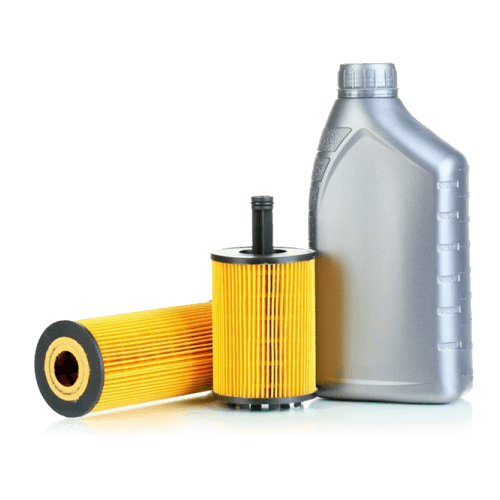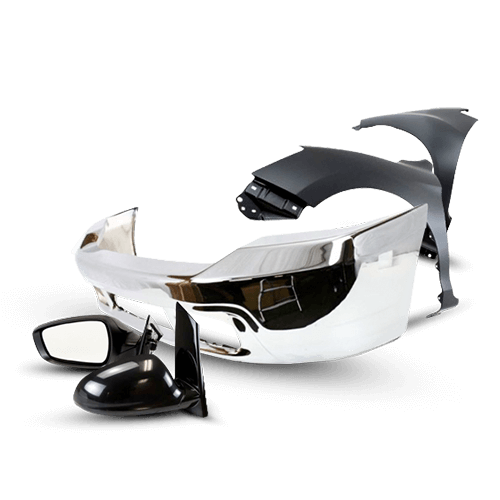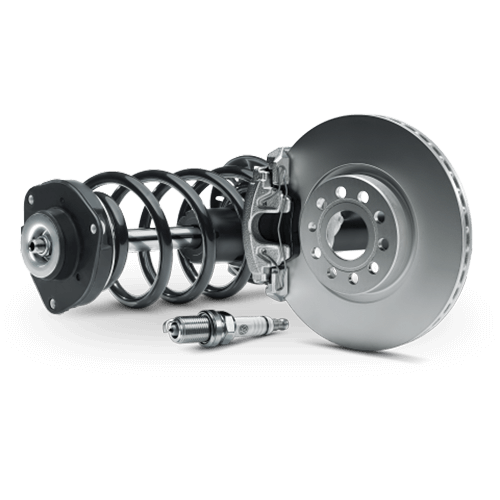
HID Bulbs and Color Temperatures: Kelvin Rating Explained
Finding an answer to how the bulb manufacturers create HID bulbs with different color temperatures is not easy to find online, and perhaps even elusive. In this blog, we will explain how HID bulbs can achieve different color temperatures. Ultimately, understanding this will point out the importance of purchasing quality HID bulbs vs. poor knockoff brands that you find in the markets like Amazon, eBay, or Temu.
The Kelvin rating for HID (High-Intensity Discharge) headlight bulbs refers to the color temperature of the light. The Kelvin rating is a measure of the color of the light emitted by the bulb and is often referred to as the "color temperature." HID headlight bulbs are available in a range of Kelvin ratings, typically between 3000K and 8000K. The lower the Kelvin rating, the warmer and more yellow the light will appear, while higher Kelvin ratings will produce a cooler, bluish-white light. For example, Osram Night Breaker Laser NEXT GEN. D3S HID bulbs , recognized as one of the brighter HID bulbs, have a kelvin rating of 4350K which is close to the OEM HID bulbs whereas Osram Cool Blue Advance D3S HID bulbs have up to 6000K making the color temperature closer to the white lights.
The Kelvin rating of an HID bulb is determined by the mixture of metal salts inside the bulb and the amount of electrical current passing through it. Different metal salts produce different colors of light when heated by the electrical current, and the amount of current passing through the bulb determines the intensity of the light produced. It's important to note that while higher Kelvin ratings may produce a cooler light, they can also produce more glare and may be less effective in certain weather conditions, such as rain or fog. Additionally, some states and countries have regulations on the maximum Kelvin rating for headlights to reduce glare and improve safety on the road.
To make higher color temperature HID (High-Intensity Discharge) Xenon headlight bulbs, manufacturers typically use a different mixture of metal salts inside the bulb. For example, a higher color temperature HID Xenon headlight bulb may use a mixture of metal salts that produces a bluish-white light, rather than the warm yellow light produced by lower color temperature bulbs. This can make the light appear whiter, but can also lead to increased glare and reduced visibility in certain weather conditions.
The mixture of metal salts inside a bulb depends on the type of bulb and its intended application. For example, in a fluorescent bulb, the mixture typically contains a small amount of mercury vapor along with argon gas and a phosphorescent coating on the inside of the glass tube. For high-intensity discharge (HID) bulbs, the metal salt mixture may include metal halides, such as sodium, thallium, indium, and scandium mixed in with noble gas xenon, and mercury vapor. It's important to note that the exact composition of the metal salt mixture can vary significantly depending on the specific application and intended use of the bulb.
Another factor that can affect the color temperature of an HID Xenon headlight bulb is the voltage applied to the bulb. Higher voltage can cause the metal salts to heat up more, producing a cooler light. However, increasing the voltage beyond the recommended range can cause the bulb to overheat and fail prematurely, so it's important to use bulbs that are designed for the specific voltage of the vehicle's electrical system.
Again, it's worth noting that some states and countries have regulations on the maximum color temperature for headlights to reduce glare and improve safety on the road. Therefore, it's important to check the regulations in your area before installing higher color temperature HID Xenon headlight bulbs. Finally, this is one of the reasons why HID Concept always recommends purchasing quality brands like Philips, Osram, Toshiba, or DAMA. Noble gas like xenon and metal salts are available for any bulb manufacturer, and that is why you can find so many non-branded HID bulbs in the market. However, it is the quality of these materials and more importantly, the manufacturing process that makes one HID bulb far superior to the other ones.
The Kelvin rating for HID (High-Intensity Discharge) headlight bulbs refers to the color temperature of the light. The Kelvin rating is a measure of the color of the light emitted by the bulb and is often referred to as the "color temperature." HID headlight bulbs are available in a range of Kelvin ratings, typically between 3000K and 8000K. The lower the Kelvin rating, the warmer and more yellow the light will appear, while higher Kelvin ratings will produce a cooler, bluish-white light. For example, Osram Night Breaker Laser NEXT GEN. D3S HID bulbs , recognized as one of the brighter HID bulbs, have a kelvin rating of 4350K which is close to the OEM HID bulbs whereas Osram Cool Blue Advance D3S HID bulbs have up to 6000K making the color temperature closer to the white lights.
The Kelvin rating of an HID bulb is determined by the mixture of metal salts inside the bulb and the amount of electrical current passing through it. Different metal salts produce different colors of light when heated by the electrical current, and the amount of current passing through the bulb determines the intensity of the light produced. It's important to note that while higher Kelvin ratings may produce a cooler light, they can also produce more glare and may be less effective in certain weather conditions, such as rain or fog. Additionally, some states and countries have regulations on the maximum Kelvin rating for headlights to reduce glare and improve safety on the road.
To make higher color temperature HID (High-Intensity Discharge) Xenon headlight bulbs, manufacturers typically use a different mixture of metal salts inside the bulb. For example, a higher color temperature HID Xenon headlight bulb may use a mixture of metal salts that produces a bluish-white light, rather than the warm yellow light produced by lower color temperature bulbs. This can make the light appear whiter, but can also lead to increased glare and reduced visibility in certain weather conditions.
The mixture of metal salts inside a bulb depends on the type of bulb and its intended application. For example, in a fluorescent bulb, the mixture typically contains a small amount of mercury vapor along with argon gas and a phosphorescent coating on the inside of the glass tube. For high-intensity discharge (HID) bulbs, the metal salt mixture may include metal halides, such as sodium, thallium, indium, and scandium mixed in with noble gas xenon, and mercury vapor. It's important to note that the exact composition of the metal salt mixture can vary significantly depending on the specific application and intended use of the bulb.
Another factor that can affect the color temperature of an HID Xenon headlight bulb is the voltage applied to the bulb. Higher voltage can cause the metal salts to heat up more, producing a cooler light. However, increasing the voltage beyond the recommended range can cause the bulb to overheat and fail prematurely, so it's important to use bulbs that are designed for the specific voltage of the vehicle's electrical system.
Again, it's worth noting that some states and countries have regulations on the maximum color temperature for headlights to reduce glare and improve safety on the road. Therefore, it's important to check the regulations in your area before installing higher color temperature HID Xenon headlight bulbs. Finally, this is one of the reasons why HID Concept always recommends purchasing quality brands like Philips, Osram, Toshiba, or DAMA. Noble gas like xenon and metal salts are available for any bulb manufacturer, and that is why you can find so many non-branded HID bulbs in the market. However, it is the quality of these materials and more importantly, the manufacturing process that makes one HID bulb far superior to the other ones.






